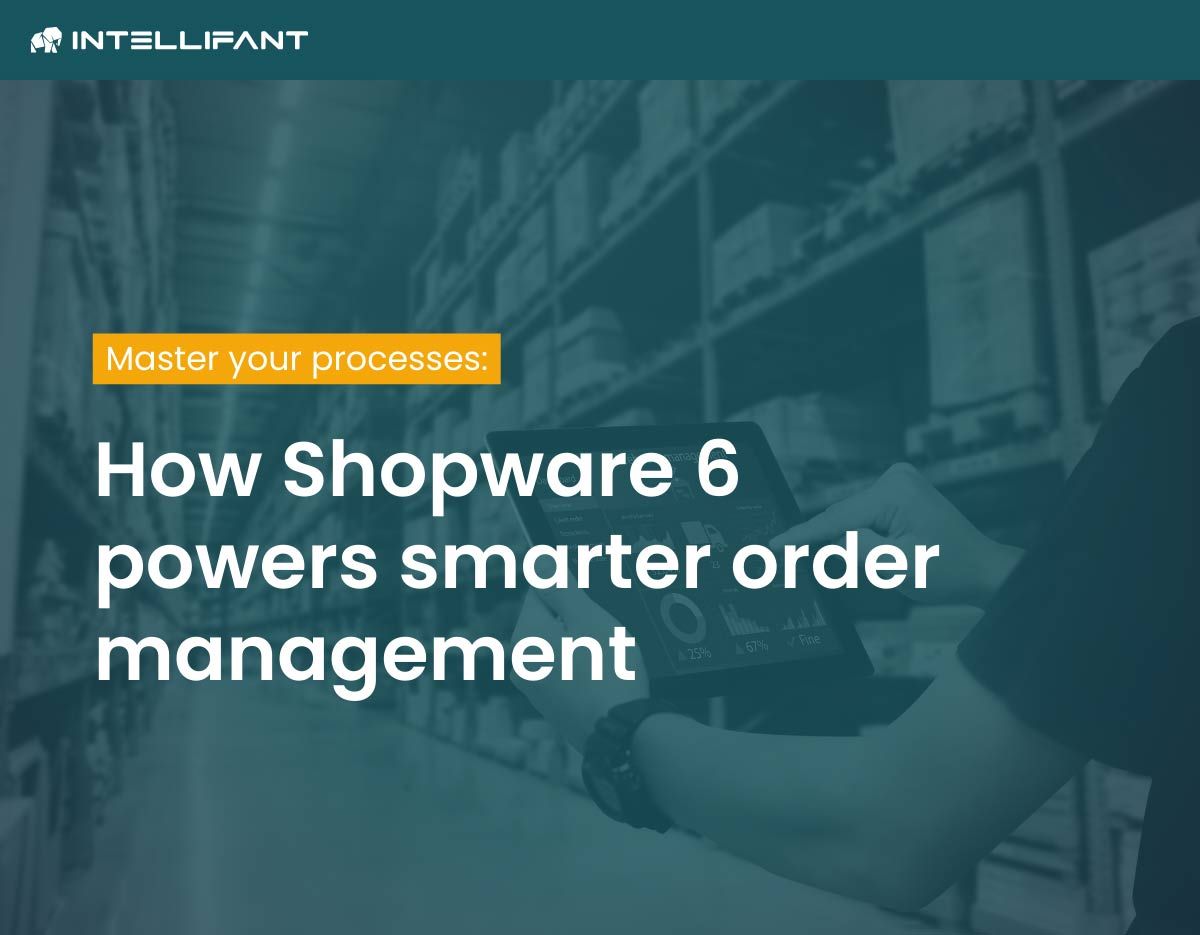Automation meets Shopware 6: Intelligent solutions in order management
Increasing order volumes, shorter delivery times and growing customer expectations: in order to survive in the market, online retailers will have to pull out all the stops in 2025.
To avoid stumbling from one ‘minefield of errors’ to the next, many e-commerce shops are now relying on automation.
A study in 2024 showed that 72 per cent of the most successful online retailers worldwide use automation in at least one area of their business – from logistics to marketing to order management (SellersCommerce, 2024).
In addition, 89 per cent of retail companies consider AI to be a decisive competitive factor (HelloRep, 2025).
Automation in order management is particularly popular and effective. And numerous examples show that automating this area greatly increases your impact.
To give just one example: in 2025, the retail division of IBN Technologies introduced a solution for sales order processing automation at a heating and air conditioning (HVAC) retailer in Pennsylvania.
Previously, orders were entered and approved manually – a time-consuming, error-prone process. With automation, the company was able to eliminate 95 per cent of manual entries and reduce operating costs by 25 per cent (source: IBN Technologies, 2025).
This example clearly shows that automation in order management not only ensures efficiency, but also stabilises processes and frees up teams for strategic tasks. Those who use Shopware 6 have clear advantages!
But how does automation in order management work with Shopware 6? What exactly are the advantages? And where can I best use them? Here's an overview!
1. Technical basis: Why Shopware 6 is suitable for automation
Shopware 6 was developed from the ground up as an API-first platform. This means that each module can communicate with other systems via interfaces – whether ERP, payment providers or external tools.
This is crucial for order management automation. Processes such as inventory reconciliation, payment verification or invoicing can be connected directly without the need for workarounds or expensive in-house developments.
What's more, thanks to the Rule Builder, retailers can create their own rules in Shopware 6 – for example, for price limits, shipping options or discount campaigns – without having to do any programming themselves.
2. Automating order management: typical scenarios
In order management in particular, there are numerous areas where automation has an immediate effect.
One example is payment reconciliation: Instead of manually checking each transaction, Shopware 6 can automatically approve or cancel orders when payments are received or not received correctly.
Inventory control also benefits. If an item is sold on marketplaces such as Amazon, Shopware 6 automatically reconciles the data. This prevents a product from still being displayed as available in the shop even though it has long been sold out.
A third scenario is invoicing. Retailers can automatically generate invoices and send them to customers immediately after an order has been completed. This saves time and reduces errors.
These examples show that automation speeds up workflows and makes processes less prone to errors – an important prerequisite for meeting the expectations of modern e-commerce customers.
3. Efficiency gains for sales, marketing, IT and monitoring
The benefits extend far beyond individual processes. Sales benefits from shorter turnaround times, marketing can identify more quickly when a campaign is not performing as planned, and IT is relieved of the burden of manual routine checks.
In addition to these classic automations, however, monitoring via alerts plays a central role. Instead of constantly keeping an eye on everything themselves, teams can receive targeted alerts when operational anomalies occur – such as a sudden drop in conversions, an unusual payment method or unusually high sales.
With intelligent monitoring tools for Shopware 6 such as INTELLIFANT, monitoring in order management can also be significantly improved.
This shifts the focus: Instead of having to keep an eye on everything themselves, teams receive targeted alerts as soon as operational anomalies occur.
4. Competitive advantage through operational stability in order management
As the market becomes increasingly competitive and customers expect same-day delivery, for example, costs are rising. According to Bitkom, each return alone costs between 10 and 15 euros on average (Bitkom, 2023).
Added to this are rising customer acquisition costs (CAC), driven by higher click prices on Google, Meta and TikTok (Shopify ‘Future of Commerce Report 2024’).
This is precisely why operational stability in order management is becoming a decisive success factor. Automating this process protects margins, reduces risks and creates sustainable growth opportunities – even under cost pressure.
Conclusion: How Shopware 6 and INTELLIFANT work together
Shopware 6 provides the basis: a modern API structure, flexible rules and a strong plugin ecosystem.
INTELLIFANT complements this foundation with an early warning system that automatically detects and reports operational deviations in order intake.
This makes automation in order management not only efficient but also reliable – and that is exactly what retailers need if they want to remain competitive in 2025.
#ecommerce #earlywarning system #shopware6 #intellifant #automation #efficiency gains





